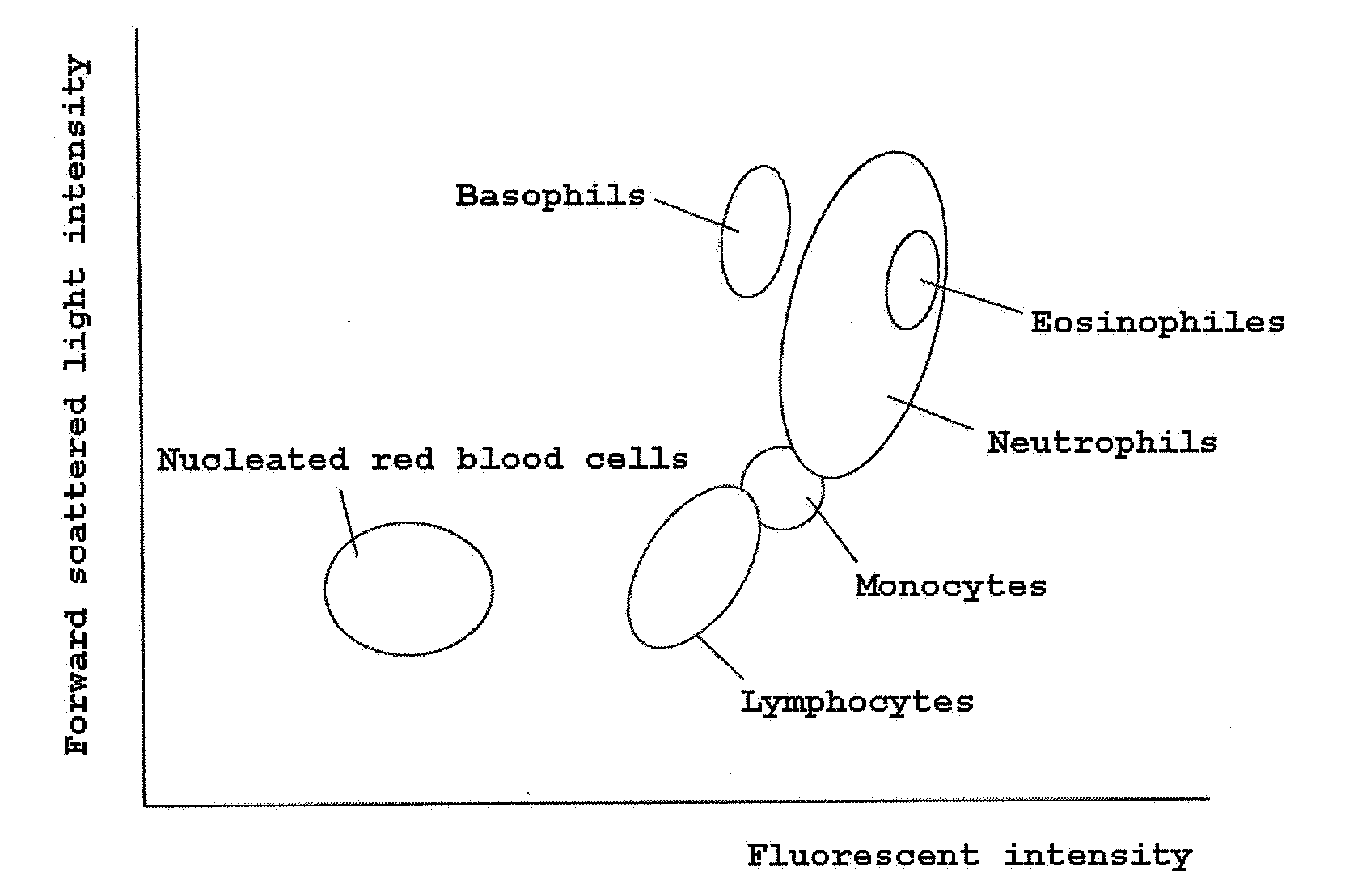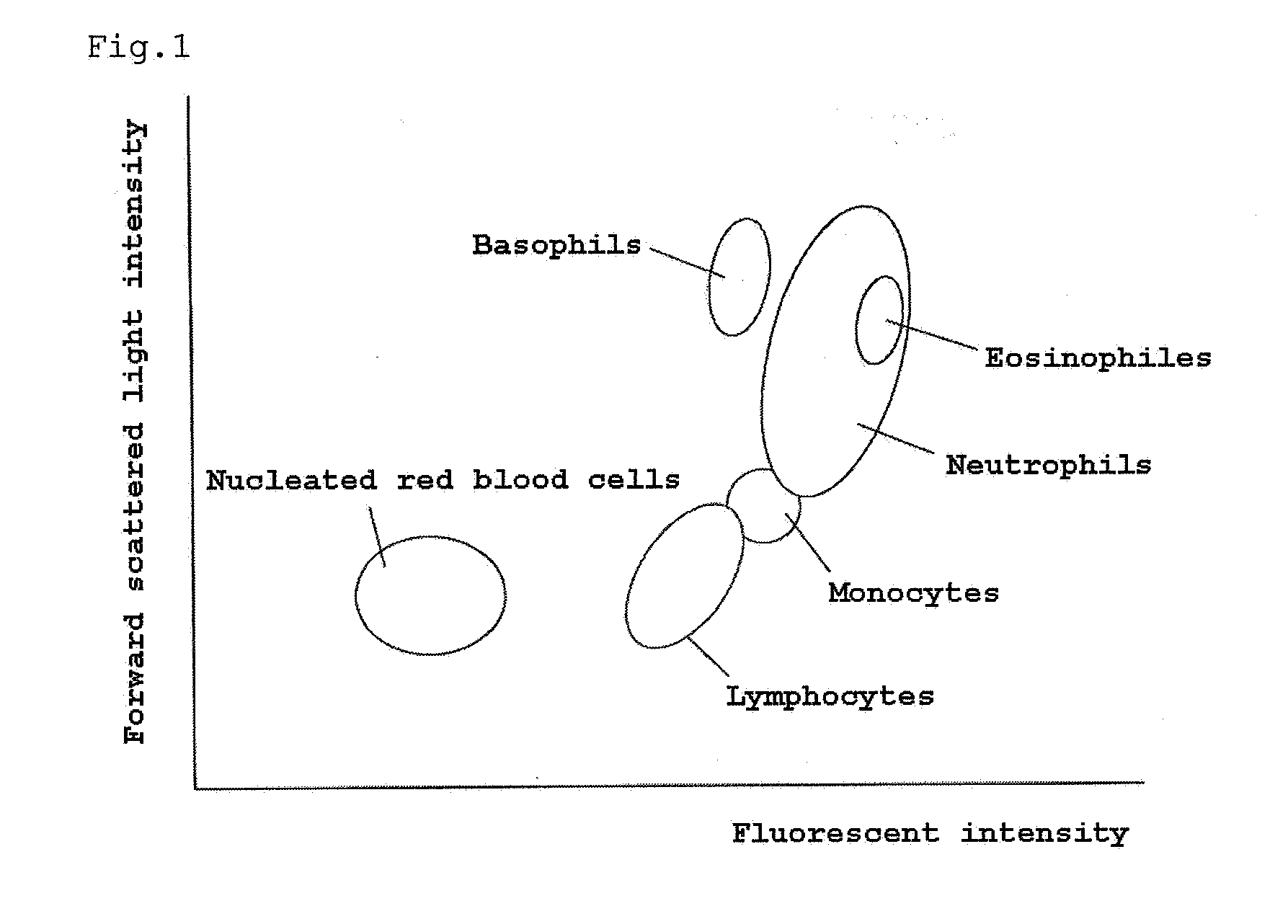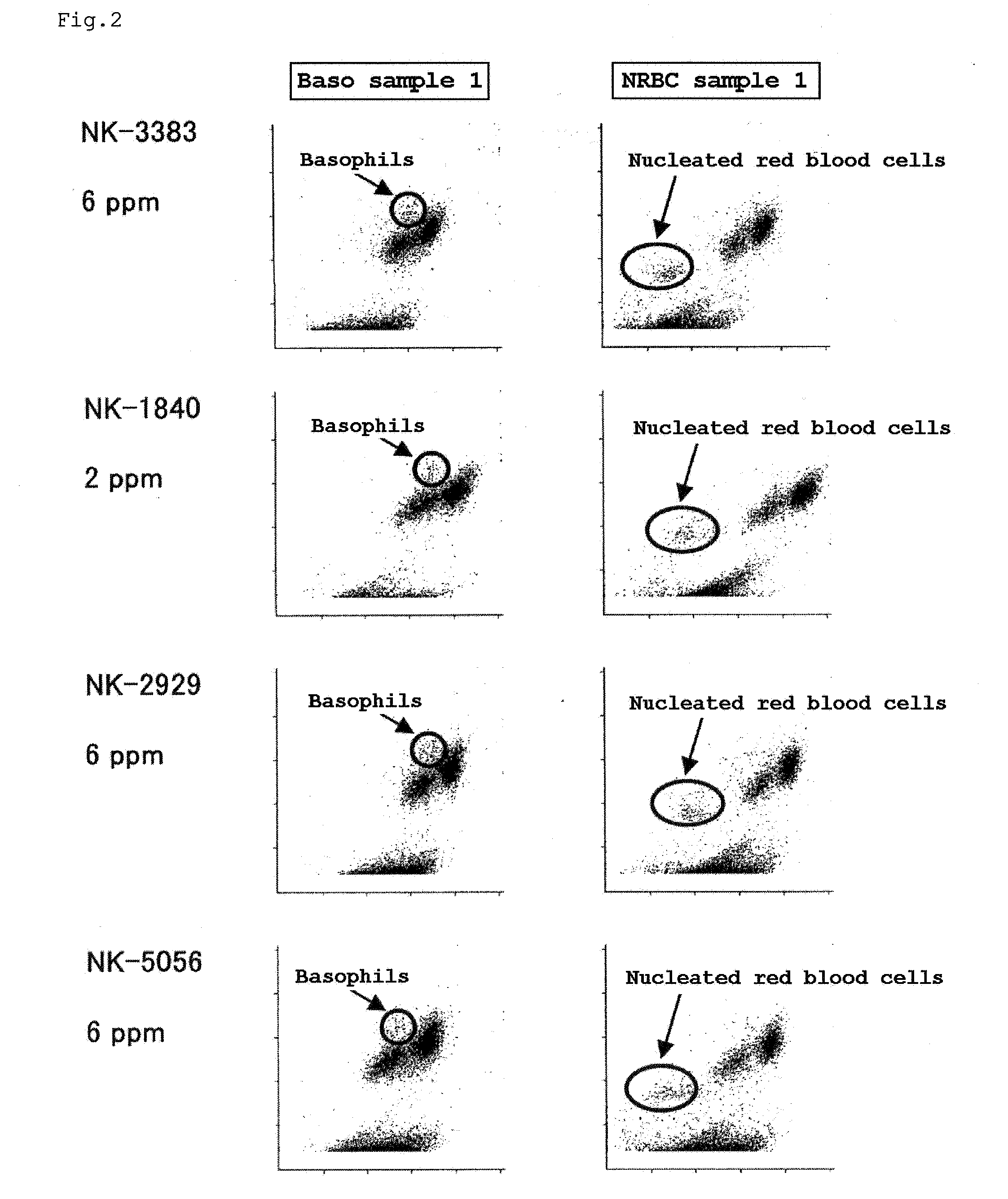Reagent for sample analysis, reagent kit for sample analysis and method for sample analysis
a sample analysis and kit technology, applied in chemical methods analysis, instruments, biochemical equipment and processes, etc., can solve the problems of increasing the cost of a total blood test, complicated devices or their size, and the method does not sufficiently separate a basophil and a leukocyte other than a basophil in some cases
- Summary
- Abstract
- Description
- Claims
- Application Information
AI Technical Summary
Benefits of technology
Problems solved by technology
Method used
Image
Examples
example 1
[0101] Into a constant temperature bath at 35° C. was placed 1 mL of an aqueous solution containing 10 mM of salicylic acid (pH: 2.7), 2% of 1-butanol and 3000 ppm of DTAB. To this aqueous solution was added each dye (6ppm of NK-3383, 2 ppm of NK-1840, 6 ppm of NK-2929, 6 ppm of NK-5056, 2 ppm of NK-9001, 2 ppm of NK-9002, 2 ppm of NK-9003, 2 ppm of NK-4249, and 2 ppm of NK-3606) described in FIG. 2 and FIG. 3 so that each concentration became the aforementioned concentration, respectively, to dissolve it, to obtain each reagent for sample analysis containing each dye.
[0102] One milliliter of the resulting reagent for sample analysis, and 20 μL of a blood sample (Baso sample 1 or 2, or NRBC sample 1 or 2) were sufficiently mixed. The resulting measurement sample was reacted for 20 seconds in a constant temperature bath (35° C.). After the reaction, the measurement sample was taken out from the constant temperature bath, and the measurement sample was guided to a detection part of a...
example 2
[0111] Into a constant temperature bath at 35° C. was placed 1 mL of an aqueous solution containing 10 mM of salicylic acid (pH: 3.0) and 3000 ppm of decyltrimethylammonium bromide (DTAB). To this mixed solution was added each alcohol (0.05% of 1-heptanol, 2% of 1-pentanol, 2% of 1-butanol, 2% of isobutanol, 1% of 2-butanol, 1% of isoamyl alcohol, 0.5% of 2-phenoxyethanol, 0.5% of 2-phenylethanol) shown in FIG. 4 and FIG. 5 to attain the aforementioned concentration, respectively. Then, to each of the mixed solution was added a fluorescent dye NK-2929 to attain 6 ppm. To 1 mL of each of the resulting reagent for sample analysis was added 20 μL of a blood sample, followed by sufficiently mixing. The resulting measurement sample was reacted for 20 seconds in a constant temperature bath (35° C.). After the reaction, the measurement sample was taken out from the constant temperature bath, and was measured with a flow cytometer as in Example 1.
[0112] For each measurement sample, a scatt...
PUM
 Login to View More
Login to View More Abstract
Description
Claims
Application Information
 Login to View More
Login to View More - R&D
- Intellectual Property
- Life Sciences
- Materials
- Tech Scout
- Unparalleled Data Quality
- Higher Quality Content
- 60% Fewer Hallucinations
Browse by: Latest US Patents, China's latest patents, Technical Efficacy Thesaurus, Application Domain, Technology Topic, Popular Technical Reports.
© 2025 PatSnap. All rights reserved.Legal|Privacy policy|Modern Slavery Act Transparency Statement|Sitemap|About US| Contact US: help@patsnap.com



